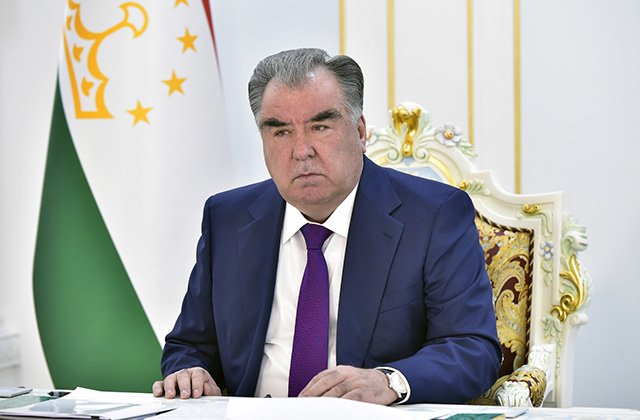President Emomali Rahmon today had a telephone conversation with Sughd Governor Rajabboy Ahmadzoda, according to the Tajik president’s official website. Sughd governor reportedly informed Emomali Rahmon about the progress of restoration work in Isfara and Bobojon-Ghafourov district.
Ahmadzoda, in particular, noted that special commission had been set up in Isfara and Bobojon-Ghafourov district to monitor the progress of restoration work on a round-the-clock basis.
The president ordered to restore all the destroyed residential buildings within a month and provide them with all necessary household utensils.
Rahmon also ordered local authorities of Sughd province to provide financial assistance to families affected by the recent unrest on the Tajik-Kyrgyz border.
According to the preliminary data, 14 residential buildings have been destroyed completely and two other residential buildings have been damaged partially. About 150 people have reportedly been left homeless.
By president’s order all the destroyed residential buildings will be restored at the expense of the state. The residential buildings that were damaged partially are expected to be renovated within the next few days.
Recall, the clashes broke out last week along the border between Tajikistan's Sughd province and Kyrgyzstan's southern Batken region because of a dispute over a water distribution facility located in the upper reaches of the Isfara River, which both countries claim as their own.
Villagers from opposing sides hurled rocks at each other on April 28 and border guards joined the fray with assault rifles, machine guns and mortars on April 29.
Kyrgyz authorities reported 36 people killed, all but three of them civilians, and 182 wounded.
A source within the Sughd administration told Asia-Plus on the basis of anonymity that 19 Tajik nationals, including eight border guards and one OMON (special police unit) officer, were killed in the recent unrest.
Besides, 88 Tajik citizens were reportedly wounded during the April 28-29 clashes on the border.
Tajikistan and Kyrgyzstan agreed a complete ceasefire on May 1 after the worst violence in decades along the Tajik-Kyrgyz border that killed more than 50 people. The chiefs of the security agencies of Tajikistan (Saymumin Yatimov) and Kyrgyzstan (Kamchybek Tashiyev) heading the country’s delegations signed the protocol on ceasefire and withdrawal of troops.
The border of Tajikistan and Kyrgyzstan has been the scene of unrest repeatedly since the collapse of the former Soviet Union.
Border talks between Tajikistan and Kyrgyzstan began in 2002. The countries share 976 kilometers of border – of which only 504 kilometers has reportedly been properly delineated, leading to tensions for the past 30 years.




